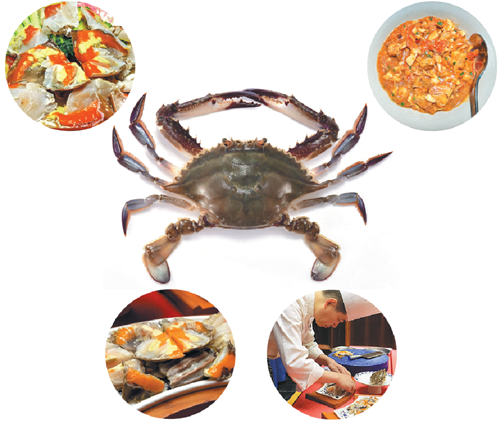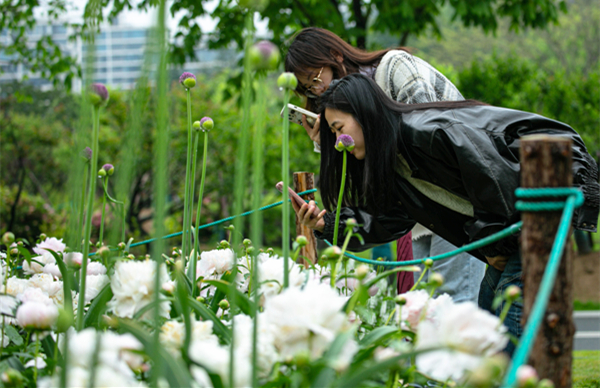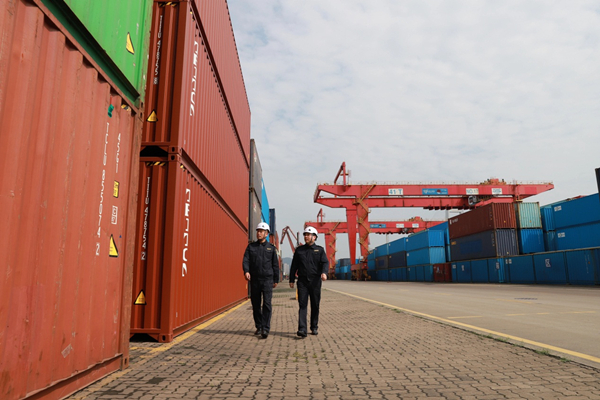Oceans of flavor

The sea of Zhejiang province offers a rich and enticing bounty for land-based food lovers
After a long fishing ban, the sea's bounty off Zhoushan, Zhejiang province, was again fully available in August. Shiploads of hairy crabs have been brought ashore in Zhoushan and distributed across the country. Known for their plump and juicy meat, the hairy crabs are sought after by foodies nationwide. As fast as the fishing boats return to dock during the crab season, their catch is soon sold out.
But these crabs are just the vanguard of Zhejiang's seafood cuisine. The real feast begins in September when the East China Sea opens for comprehensive fishing, as thousands of varieties of seafood are on display in the market until the spring.
Zhejiang cuisine balances both boldness and refinement. For example, when it comes to preparing hairy crabs, Zhoushan people simply dry-cook them in a pot, while those in Ningbo often marinate them and chop the delicacy into 18 pieces. They distribute the rich crab roe on each piece, resulting in a mouth-watering delicacy.
Zhejiang has the largest fishing ground in China with a long history of enjoying the sea's bounty.
In 2013, a typhoon resulted in archaeologists finding the Jingtoushan ruins in Ningbo, where people excavated thousands of baskets of shells including those of clams, oysters and scallops. These artifacts were confirmed to be around 8,000 years old. Sun Guoping, leader of the archaeological team, said, "the ancestors of Zhejiang can be said to be the earliest people in the country's coastal areas to eat seafood".
From this perspective, Zhejiang can be regarded as standing at the forefront of seafood consumption in China. Nowadays, Zhejiang's advanced aquaculture techniques and efficient transportation have made numerous types of seafood accessible to people across the country.
With a coastline spanning thousands of kilometers, Zhejiang has seven coastal cities: Jiaxing, Hangzhou, Shaoxing, Zhoushan, Ningbo, Taizhou and Wenzhou.
People in the province have various ways of enjoying the hairy crab, including eating it raw, stir-frying them with scallions, and possibly drizzling them with oil.
However, the favorite method is dry-cooking them without adding any seasoning. They simply put the hairy crabs in a heated pot and let them cook for just 15 minutes because locals know that "the high-end ingredients often only need the simplest cooking methods".
Besides hairy crabs, there is another delectable variety in Sanmen county, Taizhou, called the Sanmen green crab. Unlike hairy crabs that live in the deep sea, green crabs inhabit the muddy beaches of the tidal zone. The crab meat has a subtle grassy aroma and a slight hint of saltiness. But what sets the green crab apart is its roe, which is bright red and incredibly rich.
The green crab is known by various names but only a rare group can be called huangyou (yellow-oil) crabs. Under specific weather and conditions, the crab roe inside their bodies decomposes into a golden oil. Only four or five huangyou crabs can be produced from every 1,000 green crabs. The top-quality butter crabs are golden all over, with translucent joints.
When steamed, the fat is so rich that it oozes out, and even their crab legs are golden. They are considered the top tier among Chinese crabs.
In Zhejiang, the marine offerings are truly a treasure and the province is a paradise for seafood lovers. From the famous hairy crabs to an array of fish and other delicacies, its coastal cities offer something for everyone, regardless of budget. So whether you're a fan of high-end dining or streetside stalls, Zhejiang is the place to be for a delicious and satisfying seafood experience.

 China's 30-year internet odyssey
China's 30-year internet odyssey  A look at China's economic data in Q1 of 2024
A look at China's economic data in Q1 of 2024  Peony spectacle at Ningbo Botanical Garden Pe
Peony spectacle at Ningbo Botanical Garden Pe 


